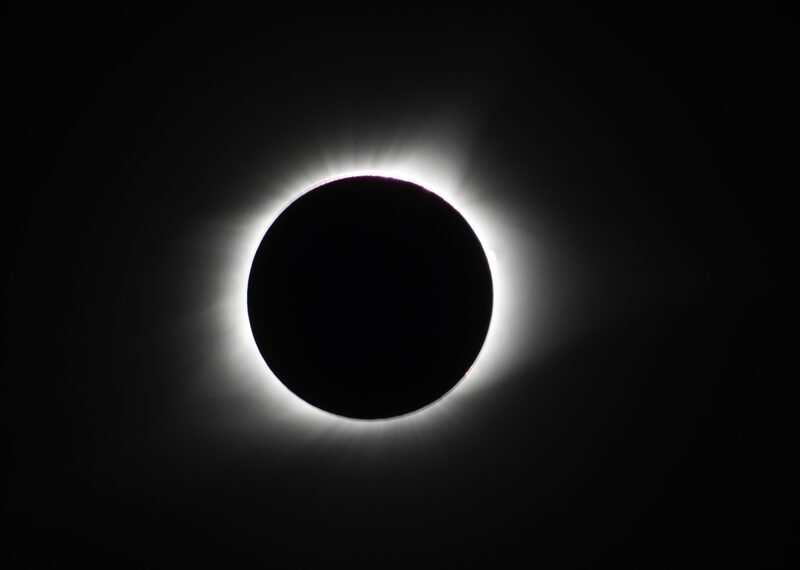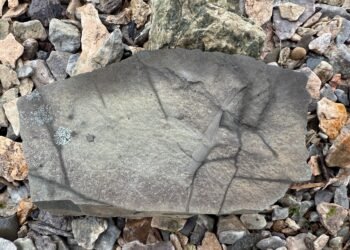Eclipse chasing is unlike any other travel experience. It’s a rare opportunity to witness one of nature’s most breathtaking phenomena – a moment when the sun, moon, and Earth align perfectly, plunging the sky into darkness. In this guide, I share my own unforgettable journey of seeing a total eclipse for the first time, along with pro tips, upcoming events, and the best places to catch the next celestial spectacle. Whether you’re a seasoned eclipse chaser or planning your first adventure, this article will help you prepare for an awe-inspiring experience you’ll never forget.
1 Introduction: The Thrill of Eclipse Chasing
There’s something magical about the moment when day turns into night in the middle of the afternoon. It’s a fleeting event that draws people from all walks of life, from casual sky-watchers to seasoned eclipse chasers, commonly called “umbraphiles”, who travel thousands of miles for just a few minutes of cosmic wonder. On April 8, 2024, I joined the ranks of these enthusiasts, setting out from my hometown of St. George, New Brunswick, on a journey to witness a total eclipse for the very first time. This was my first real taste of eclipse chasing, and I was determined to savor every second.
For those lucky enough to be in the path of totality, a solar eclipse is more than just an astronomical event; it’s a profound and surreal experience that leaves you in awe of the universe. My excitement was palpable as I prepared to chase the shadow of the moon across North America. Little did I know that this would become one of the most unforgettable moments of my life.
2 The Science Behind Solar Eclipses: A Dance of Shadows
A solar eclipse happens when the moon moves directly between the Earth and the sun, casting a shadow that temporarily blocks out the sun’s light. While the idea seems simple, the alignment required for this event is what makes it so special. The orbits of the Earth and moon are slightly tilted relative to each other, so solar eclipses don’t occur every month. Instead, they happen only when the sun, moon, and Earth line up perfectly during a new moon. This precise alignment is what makes solar eclipses rare and eagerly anticipated.
Types of Solar Eclipses
While total solar eclipses are the most dramatic, there are actually several types of solar eclipses, each offering a unique spectacle in the sky. Here’s a look at the different kinds of solar eclipses you might encounter and what makes each one special.
- Partial Eclipse: The moon covers only a part of the sun, leaving a crescent-shaped sun visible. I had experienced two partial eclipses before, and while they were intriguing, they couldn’t compare to the dramatic experience of totality.
- Annular Eclipse: The moon is farther from Earth in its orbit, so it doesn’t completely cover the sun. Instead, it creates a striking “ring of fire” effect, where a thin ring of sunlight surrounds the darkened moon.
- Total Eclipse: The moon fully obscures the sun, revealing the sun’s corona – its outer atmosphere, visible only during totality. This is the rarest and most spectacular type of eclipse, offering a view unlike anything else in nature.
What sets total eclipses apart is their rarity and the unique experience they offer. Although solar eclipses occur multiple times each year, the path of totality – the narrow strip where the sun is completely covered, is usually only about 160 km (100 mi) wide and shifts location with every eclipse. This means that even if an eclipse is visible from your area, you may need to travel to be within the path of totality for the full, breathtaking spectacle.
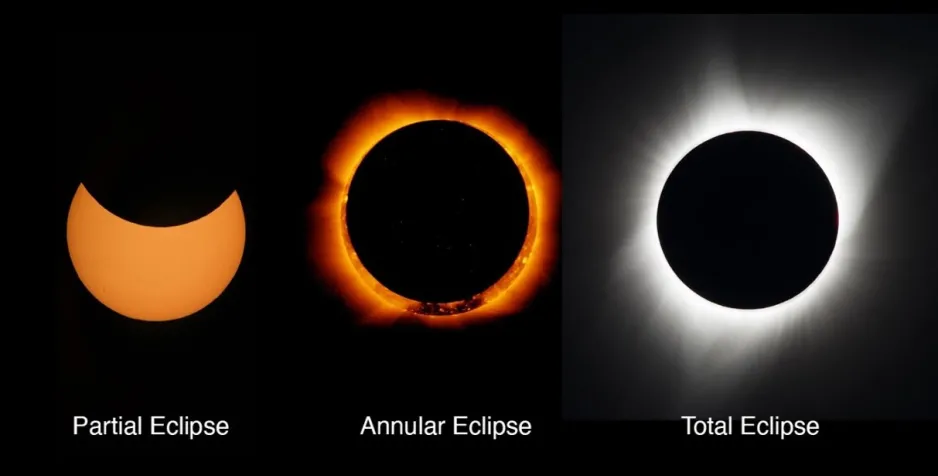
In April 2024, the path of totality was set to cross North America, stretching from Mexico to Canada’s Atlantic provinces. In my hometown of St. George, New Brunswick, I would have seen a near-total eclipse with about 99% coverage – close, but not quite enough. I wanted the full experience of totality, where the sky darkens completely. That’s why I made the nearly two-hour drive to Fredericton, the capital of New Brunswick, which lay directly in the path of totality. And began my first eclipse chasing adventure.
3 Famous Solar Eclipses in History: Moments That Changed the World
Solar eclipses have fascinated humanity for millennia, often seen as omens or divine messages. They have also played a crucial role in advancing scientific knowledge and inspiring awe across different cultures. Here are some of the most notable eclipses throughout history:
- The Eclipse of 585 B.C.: An Omen of Peace – According to Herodotus, a solar eclipse ended a war between the Medes and the Lydians. The sudden darkness was seen as a sign from the gods, prompting both armies to cease fighting. This event is one of the earliest recorded instances of an eclipse influencing historical events.
- Halley’s Eclipse (1715) – Edmond Halley, of Halley’s Comet fame, accurately predicted the path of a total solar eclipse across England. His successful forecast demonstrated the power of mathematical astronomy and marked a turning point in public confidence in scientific predictions.
- The Eclipse of 1919: Proving Einstein’s Theory – During the total solar eclipse of 1919, Sir Arthur Eddington measured the bending of starlight near the sun, confirming Einstein’s theory of general relativity. This experiment provided the first observational evidence supporting the idea that gravity can bend light.
- The Great American Eclipse of 2017 – On August 21, 2017, a total solar eclipse crossed the entire continental United States. It was one of the most widely viewed eclipses in history, drawing millions of people outdoors to witness the spectacle. The event sparked a renewed interest in astronomy and was a major social media sensation.
- The South American Eclipse of 2019 – The July 2, 2019, total solar eclipse brought eclipse chasers to Chile and Argentina, where clear skies offered spectacular views. The event highlighted the rising trend of “eclipse tourism,” with travelers flocking to prime viewing locations in the Andes Mountains.
- The Pandemic Eclipse of 2020 – The total solar eclipse of December 14, 2020, was visible across parts of Chile and Argentina. Due to the COVID-19 pandemic, in-person gatherings were limited, and many people watched the event online via live streams. It was a unique example of how technology allowed the world to witness a celestial spectacle despite global travel restrictions.
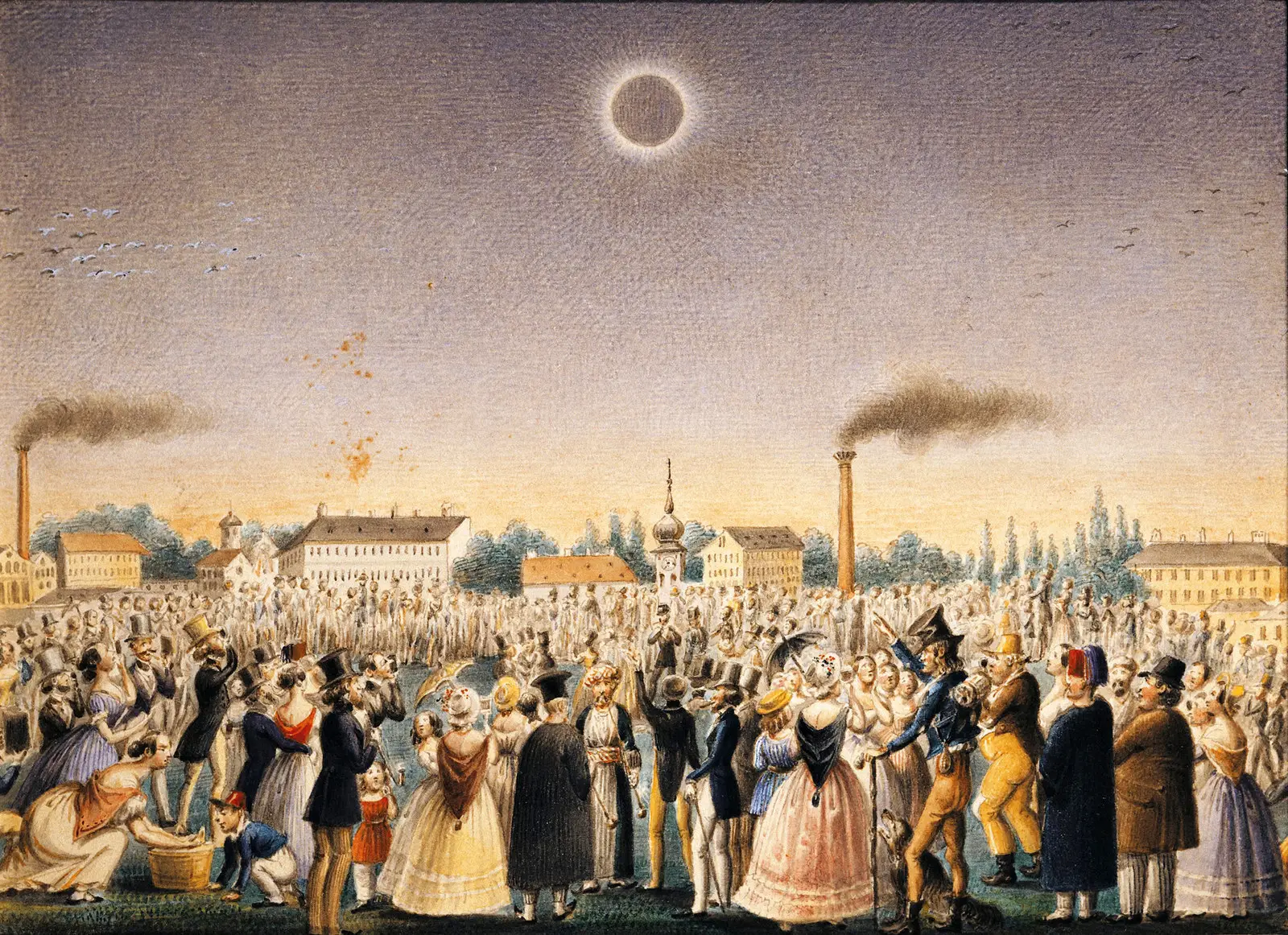
4 My Journey to Fredericton: The Build-Up to Totality
The morning of April 8 was filled with anticipation. I had experienced partial eclipses before, but this time, I was determined to see the full spectacle of totality. This wasn’t just another sky-watching trip – it was my first serious foray into eclipse chasing. The weather forecast predicted clear skies – a rarity for spring in eastern Canada, and I felt a surge of optimism as I packed my bag for the trip. I didn’t have official eclipse glasses, so in a last-minute pinch, I borrowed the lens from a welding mask. It wasn’t ideal; the green tint would distort the colors of the sun, but it provided the necessary eye protection.
The drive from St. George to Fredericton took nearly two hours. As I navigated the winding roads, I noticed the traffic building up – it felt like a shared journey, a collective quest. This was eclipse chasing in its purest form: strangers becoming fellow travelers, united by the same cosmic goal. The closer I got to the city, the more evident it became that I was not alone in my pursuit; the traffic was nearly bumper-to-bumper leading into the capital. The atmosphere buzzed with excitement, like a festival dedicated to the cosmos.
I arrived in downtown Fredericton with time to spare. I chose a spot on the steps of the Beaverbrook Art Gallery, directly across from the historic Legislative Assembly of New Brunswick. The area was buzzing with people – from seasoned astronomers with high-tech telescopes to children using homemade pinhole projectors. It was a community of sky-watchers, bound together by the thrill of eclipse chasing, all eagerly awaiting the same fleeting moment.
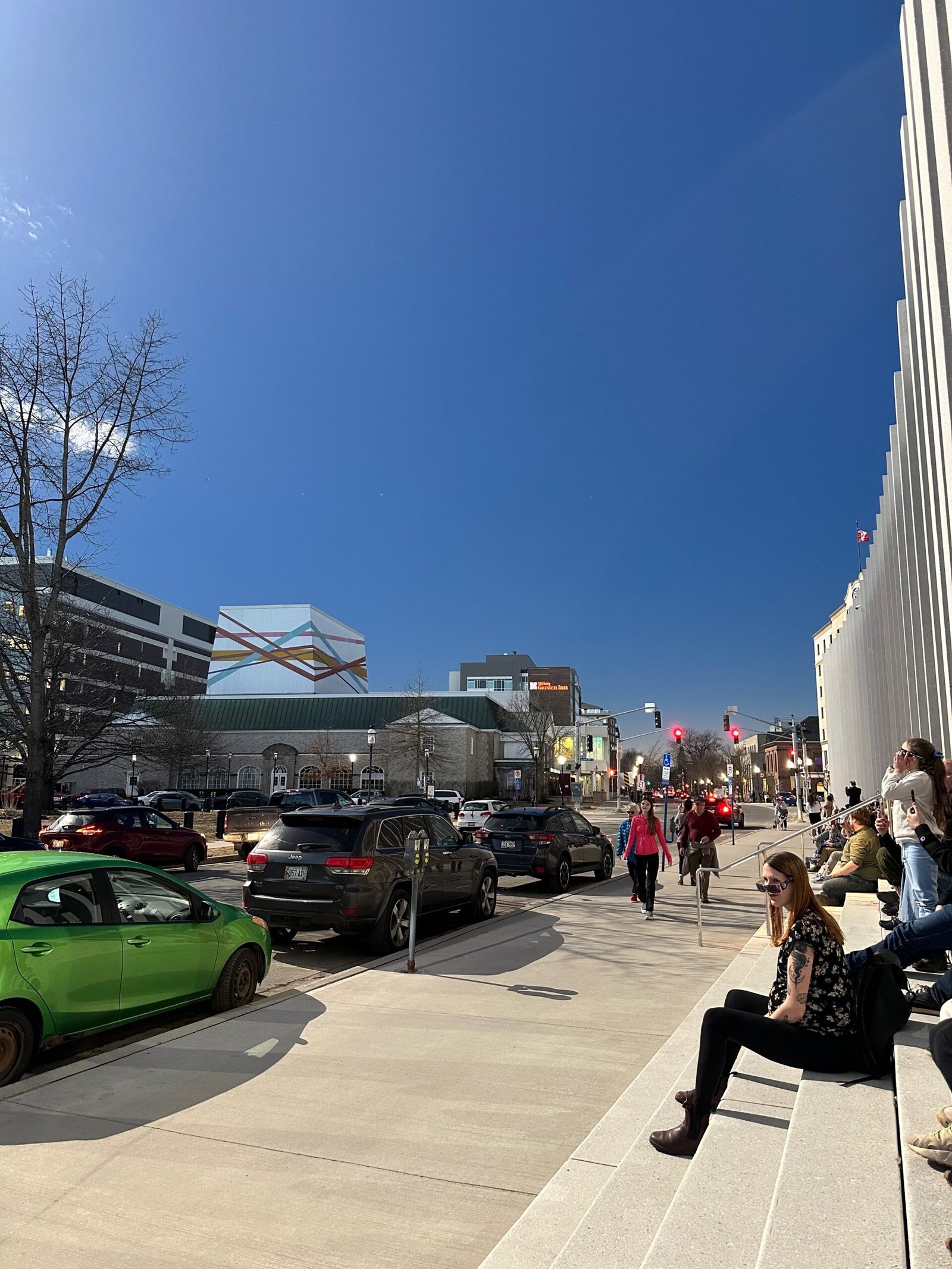
5 Experiencing Totality: A Moment of Cosmic Connection
As the clock approached 4 pm AST, the moon began its slow dance across the sun. At first, it was a small bite, barely noticeable, but over the next half hour, the shadow grew. By 4:33 pm, the sky took on an eerie, otherworldly hue. It wasn’t quite night, but it wasn’t day either. The landscape was bathed in a ghostly blue light, and the temperature dropped noticeably.
At 4:34 pm, the sun disappeared entirely, leaving only its corona – a breathtaking ring of light that seemed to pulse with energy. The sky went dark, as though a strange twilight had fallen upon the Earth. Streetlights flickered on, and the crowd around me fell into an awed silence, punctuated only by gasps of amazement. It was as if time had stopped.

The total solar eclipse lasted 2 minutes and 17 seconds, but it felt like an eternity. I couldn’t take my eyes off the sky. It was a moment of pure wonder, the ultimate reward for my journey into eclipse chasing, and a reminder of how small we are in the vastness of the universe. As the light returned, the crowd erupted into cheers. Strangers hugged, children jumped up and down, and for a brief moment, we were united by the shared experience of witnessing something truly extraordinary.
View this post on InstagramLegislative Assembly of New Brunswick
6 Research the Path of Totality
Planning to witness a total eclipse starts with knowing where to go. The path of totality is the narrow strip of land where the moon completely covers the sun, and it’s the only place where you can experience the breathtaking moment of totality. To find the best locations, use interactive maps from reliable sources like NASA or TimeandDate. These maps provide detailed information about the eclipse path, timing, and duration of totality.

Aim to position yourself as close to the center line as possible. This line offers the longest duration of totality, giving you the best chance to fully experience the event. Be sure to research your chosen location well in advance and consider factors like weather, accessibility, and local accommodations. Prime spots along the center line often fill up quickly, so early planning is essential.
If you can, choose a location with clear, open skies and minimal light pollution. High-altitude or remote areas tend to offer better visibility, but also come with their own set of travel challenges.
7 Eclipse Chasing Calendar – Upcoming Total Eclipses
Get ready for some of the most spectacular celestial events of the coming decade. From the Arctic Circle to the deserts of Egypt, these total solar eclipses offer a rare chance to witness the magic of totality in incredible destinations — perfect opportunities for eclipse chasing at its finest. Here’s when and where to catch the next big solar shows:
1. August 12, 2026 (Greenland, Iceland, Northern Spain)
Recommended Viewing Locations:
- Qaanaaq, Greenland: A remote Arctic town offering a unique, adventurous experience with stunning natural landscapes.
- Reykjavik, Iceland: Easy access with dramatic volcanic scenery; however, weather can be unpredictable.
- Valencia, Spain: One of the longest durations of totality in Europe, with excellent viewing conditions and a vibrant urban setting.
Pro Tip: For clearer skies, head to the Faroe Islands, which are known for their remote beauty and reliable weather.
Map: View Eclipse Path
2. August 2, 2027 (North Africa, Egypt, Saudi Arabia)
Recommended Viewing Locations:
- Luxor, Egypt: Totality passes directly over the Valley of the Kings, providing a rare chance to witness the eclipse in a historic setting.
- Riyadh, Saudi Arabia: The capital city offers clear desert skies and modern amenities for an optimal viewing experience.
- Seville, Spain: A vibrant cultural hub directly in the path of totality, making it an ideal location for travelers.
Pro Tip: Consider a Red Sea cruise for unobstructed views and an unforgettable experience on the open water.
Map: View Eclipse Path
3. July 22, 2028 (Australia, New Zealand)
Recommended Viewing Locations:
- Sydney, Australia: The path of totality passes over the city, making it one of the few major urban centers to experience totality.
- Auckland, New Zealand: Although only a partial eclipse here, Auckland will host events and offer spectacular coastal views.
- Australian Outback: Remote, clear skies away from city lights make this an ideal spot for the best visibility.
Pro Tip: For a more isolated experience with minimal light pollution, head to the Australian Outback.
Map: View Eclipse Path
4. November 25, 2030 (Southern Africa, Madagascar, Australia)
Recommended Viewing Locations:
- Chobe National Park, Botswana: Combine a safari adventure with a once-in-a-lifetime eclipse experience.
- Antananarivo, Madagascar: The capital city provides a great island setting with unique biodiversity and culture.
- Perth, Australia: Although only a partial eclipse here, Perth offers coastal views and hosts events for the eclipse.
Pro Tip: Join a guided expedition to remote parts of Madagascar for optimal visibility and a unique cultural experience.
Map: View Eclipse Path
5. March 30, 2033 (Alaska, Eastern Russia)
Recommended Viewing Locations:
- Fairbanks, Alaska: One of the few accessible locations in the path of totality, offering clear skies and Arctic views.
- Anadyr, Russia: A remote spot with great visibility and minimal crowds for a unique experience.
- Nome, Alaska: Offers coastal views with a good chance of clear weather.
Pro Tip: Be prepared for cold weather conditions and pack appropriately for the harsh Arctic climate.
Map: View Eclipse Path
6. March 20, 2034 (Africa, Middle East, Asia)
Recommended Viewing Locations:
- Jaipur, India: The path of totality passes near this city, offering the chance to see the eclipse alongside India’s historic palaces.
- Muscat, Oman: Coastal views combined with desert landscapes provide a unique viewing experience.
- Nairobi, Kenya: Experience the eclipse with a chance to explore nearby wildlife reserves.
Pro Tip: Plan to arrive at your chosen viewing location a day or two in advance. Popular cities like Jaipur (India), Muscat (Oman), and Nairobi (Kenya) will likely attract large crowds, so arriving early gives you time to explore local landmarks while avoiding heavy traffic on eclipse day.
Map: View Eclipse Path
Whether you’re a seasoned eclipse chaser or planning your first celestial adventure, these upcoming events offer incredible opportunities to witness the wonder of totality. Mark your calendar, choose your viewing spot, and prepare for an unforgettable experience under the shadow of the Moon.
8 Pro Tips for Eclipse Chasing
Eclipse chasing is an exhilarating adventure that calls for thoughtful preparation and strategy. Here are some essential tips to help you make the most of your experience:
1. Plan Well in Advance
- Accommodation: Total eclipses can attract thousands of visitors, especially to popular locations. Book your lodging well in advance – sometimes a year or more ahead.
- Travel Logistics: Be prepared for road closures, traffic, and increased crowds. Plan to arrive at your viewing location a day or two before the event to avoid last-minute delays.
2. Research the Weather
- Check Historical Weather Patterns: Choose a location with a high likelihood of clear skies. Websites like EclipseWise and TimeandDate provide weather statistics for eclipse days.
- Have a Backup Plan: Weather can be unpredictable. Choose a location where you can easily drive to a different spot if the weather forecast looks cloudy.
3. Understand the Eclipse Path
- Path of Totality: Aim to be as close to the center line of the path of totality as possible for the longest duration of the eclipse.
- Duration of Totality: The duration of totality can range from a few seconds to over 4 minutes, depending on your location. Prioritize locations offering longer totality for a more memorable experience.
4. Bring Proper Viewing Equipment
- Eclipse Glasses: Regular sunglasses are not safe for viewing the Sun. Invest in certified solar eclipse glasses to protect your eyes.
- Solar Filters for Cameras: If you plan on photographing the eclipse, use a solar filter for your camera to prevent damage to the lens and sensor.
- Welding Glasses: A #14 welding glass lens is a great alternative for safe viewing (and a unique story piece, as I experienced!).
5. Embrace the Atmosphere of Totality
- Observe the Changing Environment: As totality approaches, notice the drop in temperature, the shifting light, and the behavior of animals. The eerie twilight adds to the surreal experience.
- Look for Shadow Bands: Just before and after totality, watch the ground for fleeting shadow bands – wavy lines caused by atmospheric turbulence.
6. Capture the Moment Mindfully
- Balance Photography and Enjoyment: It’s easy to get lost behind the camera, but don’t forget to experience the eclipse with your own eyes. Try setting up a time-lapse or video so you can focus on the moment.
- Photograph the Crowd: Capture the reactions of fellow eclipse chasers and onlookers – the collective awe is a big part of the experience.
7. Take Notes for Your Next Chase
- Document the Experience: Write down your observations, feelings, and any surprises. This can help you plan better for future eclipses and makes for a great story to share.
- Plan for Future Eclipses: Check out upcoming eclipse paths – there are several exciting ones in the coming years, including the 2026 eclipse in the Arctic and the 2027 eclipse in Egypt.
8. Join an Eclipse Tour Group
- Guided Tours: If you’re new to eclipse chasing, consider joining a guided tour with experienced eclipse chasers. They handle the logistics and often include expert talks, making it a great way to learn and meet other enthusiasts.
- Community Engagement: Connect with other eclipse chasers online (e.g., the Solar Eclipse Chasers group on Facebook) to share tips, find viewing partners, and stay updated on the latest eclipse news. Also, look for local astronomy clubs, as they often host special viewing events.
9. Travel Off the Beaten Path
- Avoid Overcrowded Areas: While popular cities offer great viewing spots, consider exploring lesser-known areas along the eclipse path for a quieter, more personal experience.
- Combine Eclipse Chasing with Local Exploration: Use the eclipse as an anchor point for a broader trip. Explore nearby attractions, parks, and cultural sites – this makes the journey as memorable as the destination.
10. Be Prepared for the Unexpected
- Pack Essentials: Bring sun protection, extra water, snacks, and a chair or blanket. You may be waiting for several hours before totality begins.
- Stay Flexible: The best eclipse chasers are adaptable. If weather or logistics throw a curveball, embrace the adventure – it’s all part of the experience.
Eclipse chasing offers a unique perspective on travel, combining the awe of celestial events with the thrill of exploration. Whether it’s your first chase or your tenth, each eclipse is a one-of-a-kind experience.

9 Conclusion: The Magic of Witnessing Totality
As I drove home that evening, the sun setting behind me, I couldn’t stop replaying the experience in my mind. Witnessing a total eclipse is a once-in-a-lifetime experience that stays with you forever. It’s a moment that transcends words, a brief glimpse into the wonders of our universe. If you ever have the chance to chase an eclipse, seize it. The memories you make will be worth every mile.
10 More Science Travel Stories from Curious Don
If you found yourself captivated by the geology, engineering, and alpine wonder of Aiguille du Midi, here are two more science-infused adventures you’ll love:

